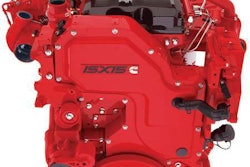For many years, it seemed like no job in the transportation industry was finished until the paperwork was done. Times have changed. Today, any process with paper is synonymous with waste, or better yet, an opportunity for change.
Documents used for proof-of-delivery (POD) present the best opportunity to go paperless. The benefits may not be apparent to those accustomed to the daily routine, however. When drivers receive load manifests or bills of lading at the shipping dock, carrying the paper along with the load might seem like second nature, at least until documents end up missing before they make it back to the office.
People in the office clearly see the downside of paperwork as it comes across their desks, but what it costs may not be all that apparent either.
Document management systems and services have become widely used to route documents, or rather images, into the office to speed up billing, payroll and other tasks. But the technology can also make it easy to lose sight of additional savings by removing paperwork altogether.
 Click on the info-graphic to see the hidden costs and opportunities to go paperless.
Click on the info-graphic to see the hidden costs and opportunities to go paperless.A small, over-the-road truckload carrier that makes one or two deliveries per day, per driver, is probably not consuming much paper. But fleets that make dozens of deliveries a day, per driver, have a real problem on their hands, as the info-graphic shows.
According to the info-graphic, a paper POD process requires 1.5 minutes, per document, to manage. Since time is money, a 10-truck fleet that makes 30 deliveries per truck per day could save about $3,200 a month in labor costs ($20 per hour) and forms by eliminating paper, not counting the time it takes staff to respond to customer requests for POD documents.
The info-graphic also shows the fast-paced growth of mobile devices and applications. Drivers already own the hardware — a smart phone or tablet — and a mobile subscription to capture delivery information including electronic signatures needed for proof of delivery.
Besides eliminating paper, fleets can use features found in mobile proof-of-delivery applications to increase operating efficiency. Certainly, a one percent improvement in fleet efficiency is possible by optimizing delivery routes and gaining visibility of activities such as the amount of time drivers spend at each stop.
The JumpTrack proof-of-delivery application, for instance, uses about 12k of data per stop. Over the course of a month, the app will use less than 1 GB of data from a driver’s phone for making dozens of deliveries per day. Based on a standard 3GB monthly data plan costing $30 per month, a fleet could reimburse the driver $10 per month, says John Freund, president and CEO of Jump Technologies.
To create a paperless POD process from start to finish, JumpTrack interfaces with third-party order management and enterprise resource planning (ERP) systems to receive shipment manifests electronically. The manifests can also be uploaded from a spreadsheet.
The instant a delivery is made and an electronic signature captured, the POD data is pushed back to ERP systems to automate billing and other processes.
Mobile apps, with their cloud-based architecture, now make it easy to go paperless quickly. The question is will customers get on board with the new technology? Since it is now possible to experiment without making any up-front investments in hardware or software licenses, it wouldn’t hurt to ask.





![TRU-Tech_on_laptop_display[1]](https://img.ccjdigital.com/files/base/randallreilly/all/image/2014/01/ccj.TRU-Tech_on_laptop_display1.png?auto=format%2Ccompress&fit=crop&h=167&q=70&w=250)






